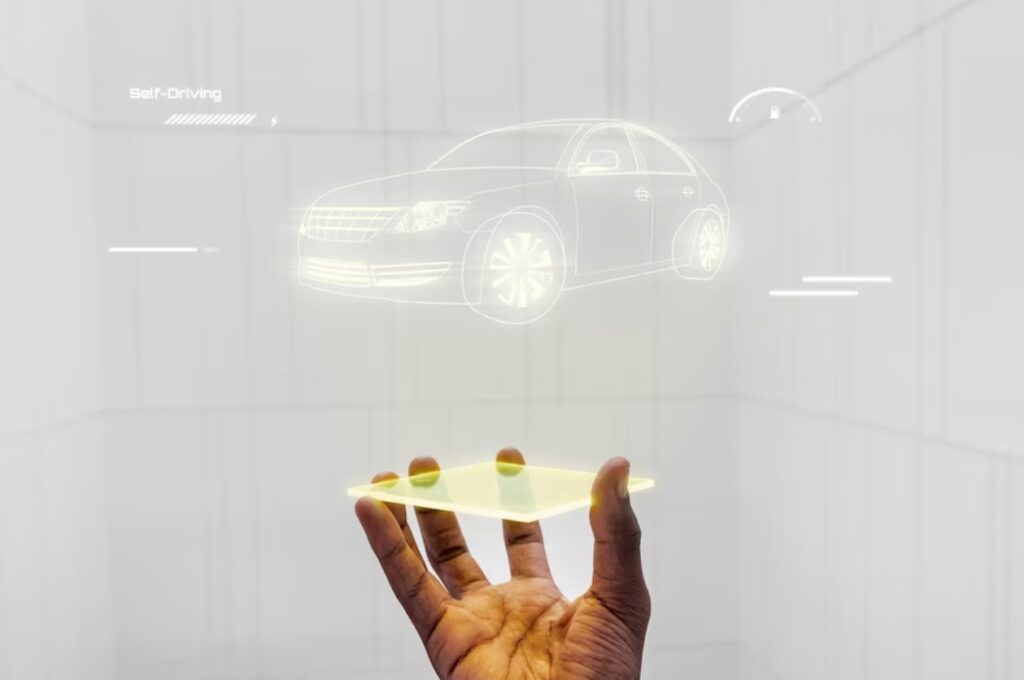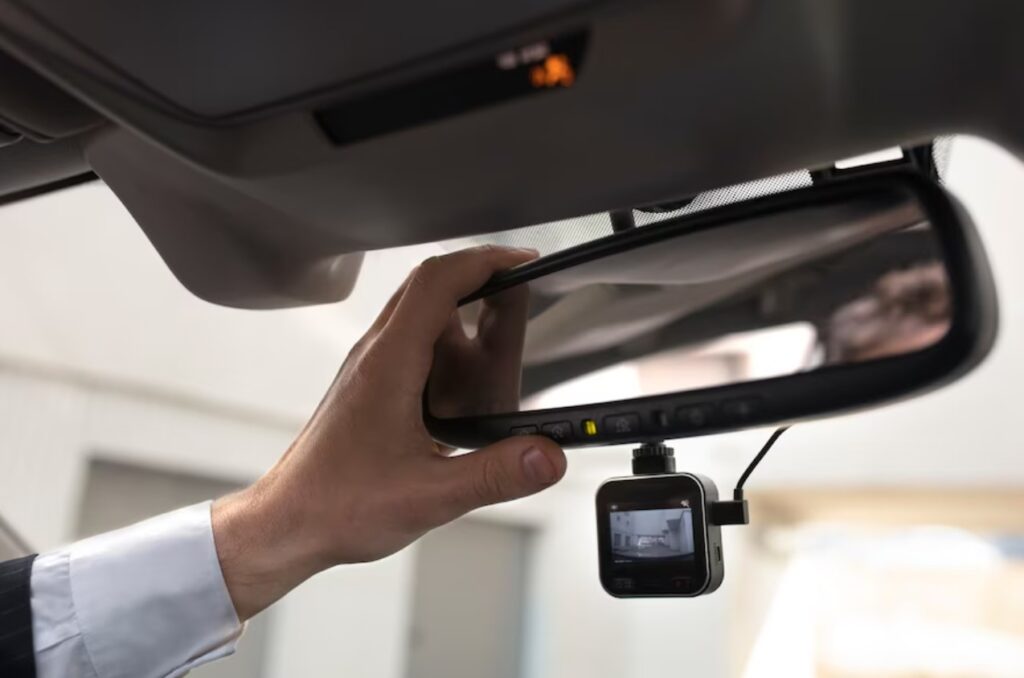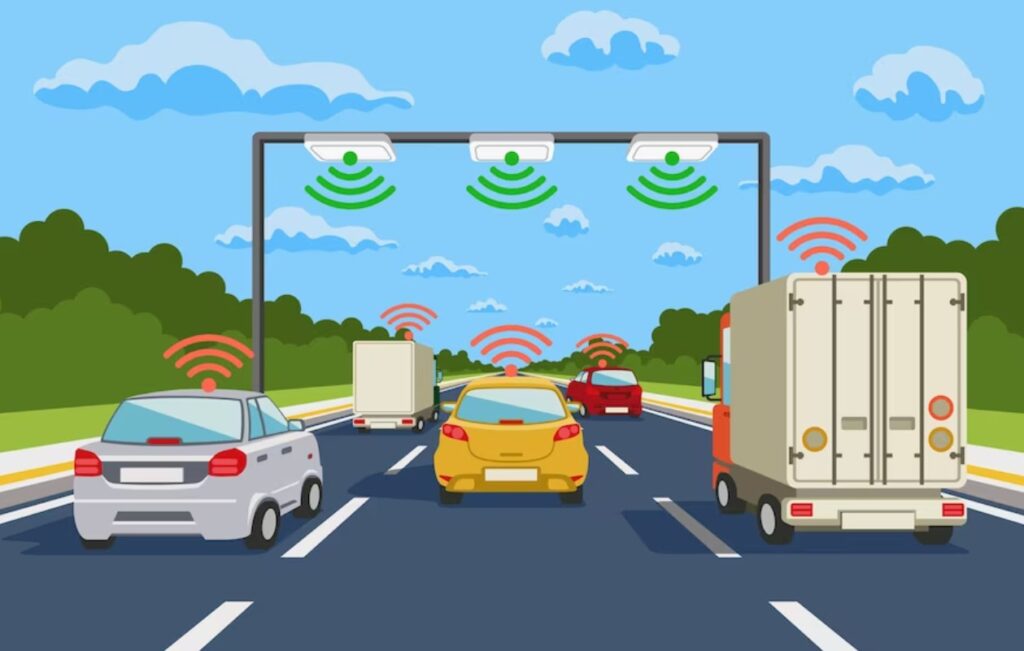Every year, thousands of people die in car accidents around the world, and many more are injured or permanently disabled. Accidents happen in the blink of an eye, and the consequences can be catastrophic. Thankfully, car manufacturers are continuously developing new technologies and features to improve car safety and prevent accidents from happening. From blind spot detection to adaptive headlights, there are a variety of new safety technologies that can make a huge difference for drivers and passengers alike. In this post, we’ll explore the latest innovations in car safety technology and how they’re helping to make the roads safer for everyone. So buckle up and get ready to discover how technology can potentially save your life on the road.

Crash Prevention Technologies
As we continue to make advancements in technology, car manufacturers are constantly improving the safety features in their vehicles. The latest innovations in car safety technology are aimed at preventing accidents from occurring in the first place. Here are some of the highlights: Adaptive Cruise Control (ACC)
Adaptive cruise control is a system that uses radar or cameras to monitor the distance between your car and the car in front of you. It automatically adjusts your speed to maintain a safe following distance. This system has the added benefit of reducing driver fatigue on long trips.
Read more : Rev Up Your Engine: The Ultimate Guide to Car Performance Tuning
Forward Collision Warning (FCW)
Forward collision warning uses cameras, lasers or radar to detect an impending collision with the vehicle in front of you. It alerts the driver with an audible warning or visual warning. This gives the driver an opportunity to take evasive action before an accident happens.
Automatic Emergency Braking (AEB)
Automatic emergency braking is a new technology that can automatically apply the brakes if the system detects an imminent collision. This technology reduces the risk of a collision occurring by bringing the vehicle to a complete stop, even if the driver is unable to take action.
Lane Departure Warning (LDW)
Lane departure warning uses cameras or sensors to detect when the driver is drifting out of their lane. It alerts the driver with an audible or visual warning. This technology can be very helpful in preventing accidents when the driver is distracted or drowsy.
Blind Spot Detection (BSD)
Blind spot detection uses sensors or cameras to monitor the blind spots around the vehicle. It alerts the driver with a warning light or an audible warning if there is a vehicle in their blind spot. This technology is especially useful when changing lanes on the highway.
Rear Cross Traffic Alert (RCTA)
Rear cross traffic alert uses sensors or cameras to detect when there is a vehicle crossing behind your car. It alerts the driver with an audible warning or visual warning in the rearview mirror. This technology is very helpful when backing out of a parking space in a crowded parking lot.
Parking Assist Systems
Parking assist systems use sensors or cameras to detect when the car is getting too close to an obstacle while parking. It can also provide steering assistance to help the driver park the car. This system can be very useful for drivers who struggle with parallel parking or reversing into tight spaces.

Benefits:
The latest innovations in car safety technology provide numerous benefits, including: -Reduced risk of accidents
-Lower rates of injury and fatalities
-Reduced driver fatigue and stress
-Improved driver confidence and peace of mind
Tips:
When driving a car with these safety features, it’s important to remember that they are not a substitute for safe, attentive driving. Here are some tips: -Always wear your seatbelt
-Stay alert and focused while driving
-Read your car’s user manual to understand how the safety features work
-Keep your car maintained and up-to-date with the latest software updates The latest innovations in car safety technology are aimed at preventing accidents from occurring in the first place. These technologies provide numerous benefits and can significantly reduce the risk of accidents, injuries, and fatalities on the road. By staying alert and using these safety features as intended, drivers can enjoy a safer, more confident driving experience.
Passive Safety Features
Passive safety features are designed to prevent or reduce injuries in the event of a car accident. These include seatbelts and airbags, as well as more advanced technologies that are becoming increasingly common in modern vehicles.
Seatbelts and Airbags: The Basics
Seatbelts and airbags are the most basic examples of passive safety features. Seatbelts are designed to keep occupants in their seats in the event of a collision, while airbags are meant to protect them from impacts with the vehicle’s interior. Together, these features can significantly reduce the risk of injury in a crash.
Intelligent Seatbelt Systems: The Next Step
Intelligent seatbelt systems take the basic concept of the seatbelt to the next level. These systems use sensors to monitor the position and motion of occupants, helping to adjust the seatbelt to provide optimal protection. For example, if an occupant moves forward during a sudden stop, the system can tighten the seatbelt to prevent whiplash.

360-Degree Camera Systems: Eliminating Blind Spots
One of the biggest challenges for drivers is the presence of blind spots around the vehicle. 360-degree camera systems use cameras mounted around the car to provide a panoramic view of the surroundings, eliminating blind spots and making it easier for drivers to see potential hazards.
Advanced Driver Assistance Systems (ADAS): Avoiding Accidents
ADAS is a rapidly growing category of safety technology, which includes features like automatic emergency braking, lane departure warning, and adaptive cruise control. These systems use sensors and cameras to monitor the vehicle’s surroundings and alert the driver to potential hazards or even take corrective actions on their own.
Head-Up Displays (HUDs): Keeping Eyes on the Road
HUDs are becoming more common in cars, allowing drivers to see important information like speed and navigation instructions projected onto the windshield. This keeps the driver’s eyes on the road and reduces the risk of distraction.
Night Vision Systems: Seeing in the Dark
Driving at night can be challenging, but night vision systems use infrared cameras to provide a clear view of the road ahead, even in complete darkness. This can help drivers avoid collisions with animals or pedestrians that may be difficult to see with standard headlights.
Read more : The Pros and Cons of Buying vs. Leasing a Car
Augmented Reality Displays: Enhancing the Driving Experience
Finally, augmented reality displays allow drivers to see additional information overlaid onto the real world. For example, they can provide a “ghost car” that shows the best driving line on a racetrack, or highlight potential hazards in the environment. This technology is still in its early stages, but is expected to become more common in the future.
Benefits of Passive Safety Features
Passive safety features offer a variety of benefits, including:
-Reducing the risk of injury in the event of an accident
-Preventing accidents from occurring in the first place
-Improving driver and passenger comfort and convenience
-Making it easier to drive in challenging conditions
Tips for Choosing a Car with the Best Safety Features
When choosing a car, it’s important to consider the safety features that are available. Some tips to keep in mind include:
-Research the available safety features for each model you’re considering
-Look for features that are tailored to your specific needs and driving style
-Consider the overall safety rating of the vehicle based on crash tests and other factors.
Vehicle-to-Vehicle (V2V) Communication Systems
Overview of V2V technology:
Vehicle-to-Vehicle (V2V) Communication Systems involve the exchange of information concerning the critical safety and operational needs of vehicles using wireless communications channels dedicated to its purpose. These systems allow cars to communicate with one another in real-time to enhance safety, reduce congestion, and improve the overall efficiency of transportation vehicles.

How it works:
V2V technology uses Dedicated Short-Range Communications (DSRC) to enable wireless communication between vehicles. DSRC is a two-way, short-to-medium-range wireless communication capability that allows communication between vehicles and between vehicles and roadway infrastructure. DSRC allows multiple vehicles to communicate with one another simultaneously and share safety critical information such as speed, direction, and location which can provide early warnings to drivers about potential safety hazards.
Benefits of V2V communication:
Improved safety: A major benefit of V2V communication systems is that it can significantly reduce the risk of accidents. By sharing critical safety information with other vehicles, drivers can be alerted to potential safety hazards, and take corrective actions to avoid accidents. V2V also provides real-time information to drivers to assist them in making informed decisions that improve safety while driving.
Reduced Congestion: V2V can help to reduce congestion by regulating the speed and flow of the traffic. By providing real-time information about upcoming intersections or congested areas, drivers can adjust their speed and route. Additionally, V2V can assist drivers in finding available parking spaces, which can reduce the amount of time spent driving around to find parking.
Improved Efficiency: V2V can improve the overall efficiency of transportation vehicles by optimizing speed and fuel consumption. By receiving real-time information about traffic patterns and other external factors, drivers can make informed decisions about the best route to take, the speed to travel, and the most efficient fuel consumption.
Possible challenges and concerns with V2V technology:
Lack of standardization: A significant challenge with V2V technology is the lack of standardization. Since there is no uniform technology platform or standardized procedures currently, this can make it challenging to implement a seamless V2V network.
Data privacy concerns: Another challenge is data privacy concerns. V2V technology relies heavily on the collection and sharing of data between vehicles, which can lead to privacy concerns for some drivers.
System reliability: The V2V network’s reliability is another major concern as it needs to be available all the time, as long as the vehicle is in use. The network must be robust, and the communication protocols must be reliable, or else the system’s performance might suffer, leaving it vulnerable to hacking risks.
Cybersecurity and Privacy Concerns
As cars become more technologically advanced, the risk of cyber attacks and privacy breaches also increases. The integration of computers, software, wireless communication networks, and electronic control units (ECUs) creates numerous entry points for hackers, putting drivers’ safety and privacy at risk. As such, cybersecurity for cars has never been more critical.
Examples of Car Hacking Incidents
Recent years have seen the rise of car hacking incidents. In 2015, hackers remotely took control of a Jeep Cherokee, causing a recall of 1.4 million vehicles. In 2019, researchers found a vulnerability in Tesla’s Model S, allowing them to gain access to the car’s systems in just a few seconds. These incidents highlight the need for enhanced cybersecurity measures in cars.
How Car Manufacturers are Addressing Cybersecurity and Privacy Concerns Car manufacturers are taking steps to address cybersecurity and privacy concerns. They are collaborating with researchers and cybersecurity experts to identify vulnerabilities and develop solutions. For example, Tesla has created an in-house team of security experts to address potential risks. BMW, General Motors, and other manufacturers have also created similar teams to ensure vehicle safety and security.
Car manufacturers are also incorporating security features in their vehicles. Some cars now come with biometric authentication, which can use the driver’s fingerprint or facial recognition to access the vehicle. Manufacturers are also incorporating over-the-air software updates, which can address vulnerabilities or system issues remotely without requiring a physical recall of vehicles.
Read more : Cruising in Style: The Latest Trends in Luxury and Exotic Cars
Potential Future Threats and Mitigation Strategies
As technology continues to evolve, new threats to car cybersecurity and privacy may emerge. For example, the increasing use of artificial intelligence and self-driving technology could create new entry points for hackers. To mitigate such threats, manufacturers are exploring new technologies, such as blockchain, which can create a more secure and trustworthy system.

Additionally, government bodies are working to create regulations and standards for car cybersecurity. In 2015, the U.S. Department of Transportation released a set of non-binding guidelines for autonomous vehicles, including recommendations for cybersecurity measures. The European Union is also implementing regulations to ensure vehicle cybersecurity, such as the General Data Protection Regulation (GDPR) and the Cybersecurity Act.
Car cybersecurity and privacy concerns are a critical issue as cars become more connected and autonomous. Car manufacturers are taking steps to address the issue, but ongoing collaboration between manufacturers, researchers, and government bodies will be necessary to ensure the safety and privacy of drivers.
Implications for Insurance and Liability
With the advent of advanced safety features in cars, there have been significant implications for insurance and liability related to car accidents. In this article, we will explore how these advanced safety features can affect insurance rates, the possible impact on liability and legal issues related to car accidents, and the need for reforms in insurance and liability laws.
How advanced safety features can affect insurance rates
Advanced safety features, such as automatic braking, lane departure warning systems, and adaptive headlights, can reduce the likelihood of accidents and, therefore, lower insurance rates. Insurance companies incentivize the installation of these advanced safety features by offering significant discounts on insurance rates to drivers who have them installed in their car. This is because these advanced safety features reduce the risk of accidents, resulting in fewer claims.
Possible impact on liability and legal issues related to car accidents Advanced safety features have also led to some significant changes in liability and legal issues related to car accidents. In cases where an accident occurs despite the presence of advanced safety features, liability will likely shift away from the driver and onto the manufacturer of the car or the company that produced the safety feature. This shift in liability also presents its own set of legal challenges as the manufacturers of the safety features must ensure that their products meet the highest safety standards.
Need for reforms in insurance and liability laws
As advanced safety features continue to evolve, it is essential to reform insurance and liability laws to keep up with the changing landscape. Insurance laws must be updated to ensure that insurers are incentivized to encourage the installation of these safety features while also ensuring that they accurately reflect the risk of accidents. Similarly, liability laws must be adapted to reflect the changing nature of liability, especially if the liability shifts from the driver to the manufacturer or the company that produced the safety feature.
Conclusion
The latest innovations in car safety technology offer us promising ways to prevent road accidents and protect ourselves and our loved ones while on the road. As evidenced by the many advancements we’ve seen so far, there’s no doubt that the future of car safety is exciting and bright. However, beyond just the technological developments, it’s essential to remember that safety on the road is also a personal responsibility. As consumers, it is vital to prioritize safety when choosing a car, staying informed about safety standards, and adhering to traffic rules, driving cautiously is also important. Ultimately, with the right balance of technological advancements and personal responsibility, we can make our roads safer for everyone.
FAQ – The Latest Innovations in Car Safety Technology
1. What are some of the latest innovations in car safety technology?
Answer: Some of the latest innovations in car safety technology include autonomous emergency braking, lane departure warning, blind-spot monitoring, forward collision warning, and adaptive cruise control.
2. How does autonomous emergency braking work?
Answer: Autonomous emergency braking uses sensors and cameras to detect potential collisions and automatically applies the brakes to prevent them from happening.
3. What is lane departure warning?
Answer: Lane departure warning detects when a vehicle has drifted out of its lane and alerts the driver with visual and/or audible warnings.
4. What is blind-spot monitoring?
Answer: Blind-spot monitoring uses sensors to detect vehicles in the driver’s blind spot and alerts the driver with visual and/or audible warnings.
5. How does forward collision warning work?
Answer: Forward collision warning detects when the car in front is slowing down or stopping and warns the driver to apply the brakes.
6. What is adaptive cruise control?
Answer: Adaptive cruise control maintains a safe following distance from the vehicle in front of you by automatically adjusting your car’s speed.
7. How do these safety features reduce the risk of accidents?
Answer: These safety features give drivers advanced warning and alert them to potential hazards, reducing the likelihood of accidents and injuries.
8. Are these safety features only available on high-end cars?
Answer: No, many cars now come equipped with these safety features as standard or optional equipment.
9. Can these safety features replace the need for defensive driving?
Answer: No, while these safety features are useful, they can’t replace the need for defensive driving practices like maintaining a safe following distance and paying attention to the road.
10. Will these safety features become mandatory in all cars in the future?
Answer: It’s possible that some of these safety features may become mandatory in the future, as governments and automakers increasingly prioritize safety in their designs.
